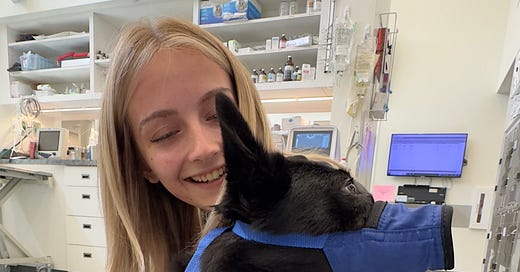As pet owners, we share a deep bond with our furry companions. They’re not just pets; they’re family. And just like we’d do anything to keep our loved ones safe, we also want to ensure our pets receive the best care possible. But sometimes, that care involves steps that might feel uncomfortable or even surprising—like muzzling or sedation during a veterinary visit. Let’s take a moment to understand why these measures are so important and how they benefit everyone involved.
The Many Hats of a Veterinarian
Veterinarians wear many hats—they’re doctors, surgeons, dentists, and even psychologists for both pets and their owners. When it comes to behavior, they rely on their experience, knowledge, and intuition to assess each situation. That “sixth sense” they develop is crucial. For example, when a dog gives what’s known as the “hairy eyeball”—a look that signals discomfort or dislike—it’s not just a glance. It’s a feeling, a warning that the animal may feel threatened or fearful.
And here’s the thing: animals are incredibly perceptive. If a veterinarian feels even a hint of fear, the pet can sense it. This can lead to a dangerous situation where the animal feels the need to assert dominance, potentially resulting in bites or attacks. Sadly, many veterinarians have been injured—some even permanently—by pets who were simply reacting to their own fear or discomfort.
Why Muzzling Isn’t a Judgment
When a veterinarian asks you to muzzle your pet, it’s not because they think your dog is “bad” or “naughty.” It’s because they value their safety—and yours. A muzzle is a temporary tool that protects everyone involved, ensuring that the vet can do their job without risk of injury.
It’s important to remember that even the sweetest, most well-behaved pets can act unpredictably in unfamiliar or stressful environments. A growl, for example, is a clear warning sign in dog language. It’s their way of saying, “Stay back, or I might bite.” When a vet hears that growl, they know the next step could be a bite. Muzzling is a proactive measure to prevent that escalation.
The Role of Sedation
Sedation is another tool that can make veterinary visits safer and less stressful for everyone. The medications used are safe and are designed to reduce anxiety, not harm your pet. Yes, your pet might be a little sleepy that day, but it’s a small price to pay for ensuring they’re calm and comfortable during their visit.
Think of it like this: if you’re nervous about a social event, you might have a glass of wine to relax. Sedation serves a similar purpose for pets, helping them feel more at ease in an unfamiliar environment. It’s not about drugging your pet—it’s about creating a positive experience for them.
Understanding Your Pet’s Behavior
Pets behave differently in a veterinary clinic than they do at home. The unfamiliar smells, sounds, and energy can make them feel insecure or threatened. And just like humans, animals feed off the energy around them. If you’re nervous or anxious, your pet will pick up on that and may become more fearful as a result.
In a veterinary hospital, even the calmest pets can exhibit unexpected behaviors. Some pets become cage aggressive, meaning they growl, lunge, or snap when confined in a kennel or cage—something they may never do at home. Others may become protective of their owners, showing guarding behaviors when a veterinarian or technician approaches. These are not signs of a “bad” pet—they are stress responses triggered by fear, anxiety, or confusion in an unfamiliar setting.
Veterinarians are trained to read the subtle cues that indicate how an animal is feeling—whether it’s the position of their ears, the tension in their body, or the tone of a growl. When they ask you to muzzle or sedate your pet, it’s not a judgment on your pet’s behavior or your skills as an owner. It’s a decision based on their professional experience and a desire to keep everyone safe.
A Partnership in Care
Veterinarians dedicate years of their lives and significant financial resources to their education because they love animals. They’re not in it for the money—they’re in it because they genuinely care. When they ask for your cooperation in muzzling or sedating your pet, it’s because they want to provide the best care possible while ensuring their own safety.
As pet owners, we can support our veterinarians by respecting their requests and understanding the reasoning behind them. Muzzling and sedation aren’t punishments—they’re tools that help create a safer, more positive experience for everyone involved.
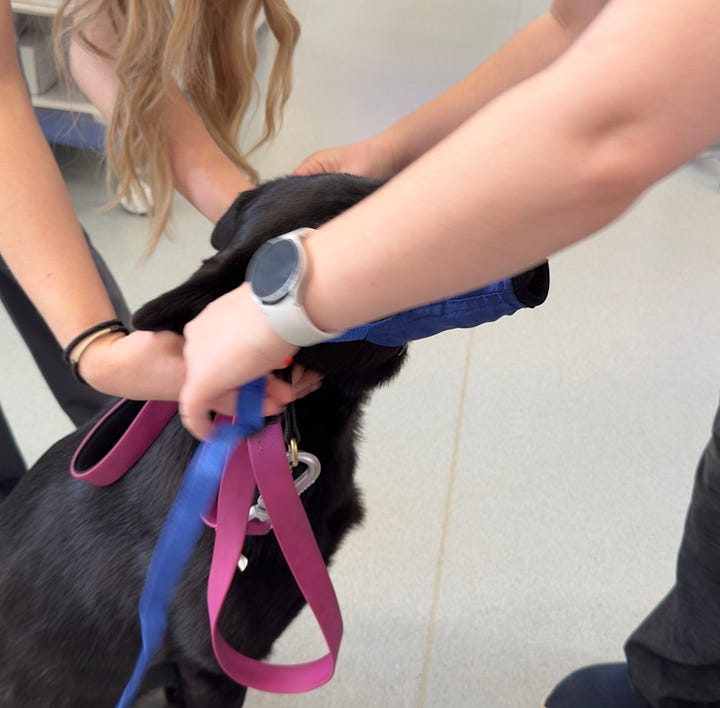
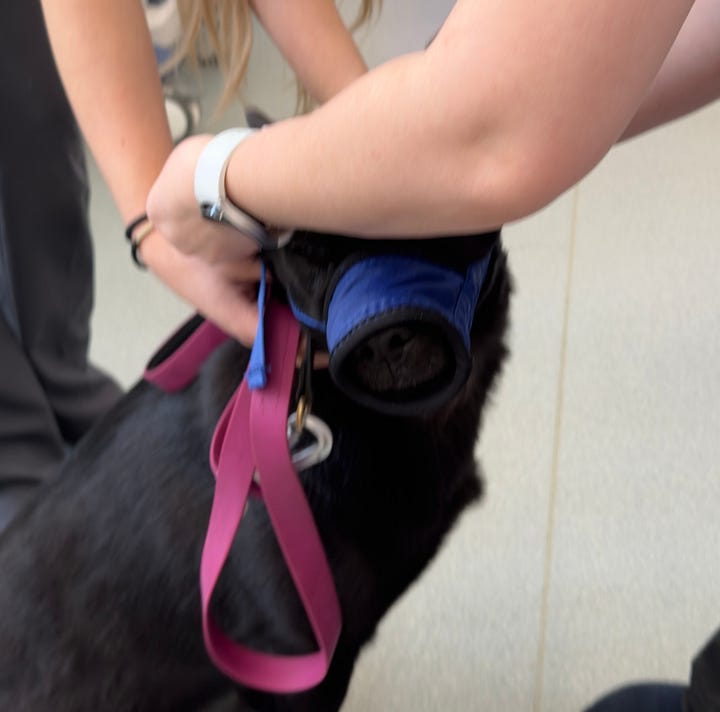
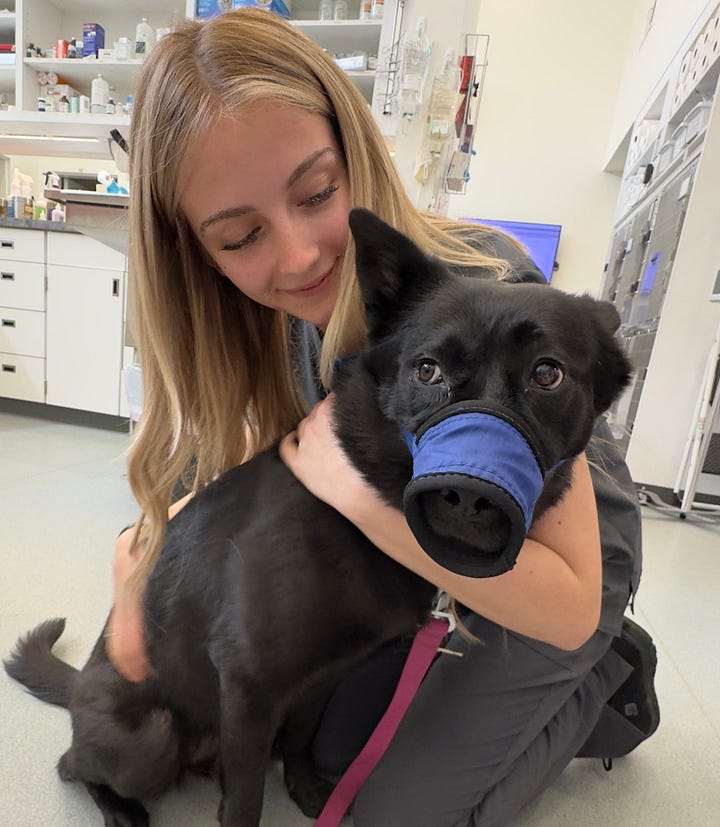
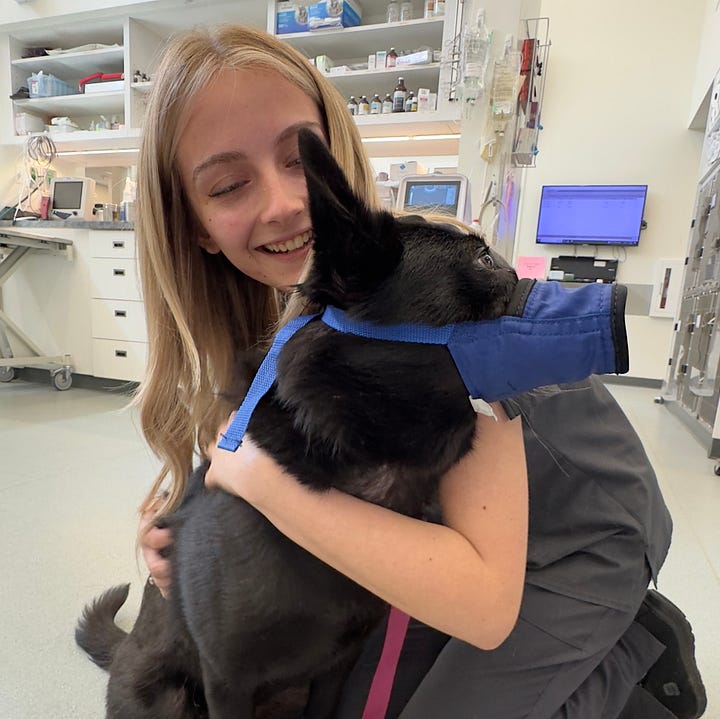
Final Thoughts
At the end of the day, we all want the same thing: to keep our pets happy, healthy, and safe. By working together with our veterinarians and trusting their expertise, we can ensure that our pets receive the care they need in a way that’s safe and stress-free for everyone. So the next time your vet asks you to muzzle or sedate your pet, remember: it’s not a judgment—it’s a partnership in care.
Let’s continue to learn, grow, and support one another in our shared love for animals. After all, they’re worth it.


